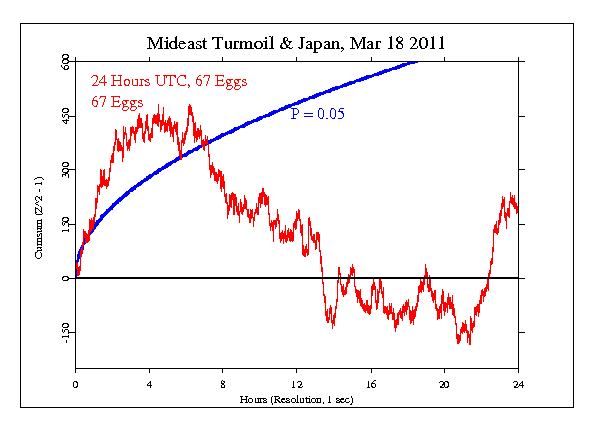|
The Libyan situation worsens, with Gadhafi's forces pounding
the insurrectionists with artillery, tanks, and bombing. The
rebels are preparing a last stand in Benghazi, hoping that
the new UN resolution and threats of military action from
the US and Nato will stop the deadly march.
Meanwhile, in Bahrain and in Yemen, government forces have
unleashed violent actions to quell revolutionary protesters.
Dozens have been killed or injured, and large numbers are
being detained.
In Japan, the magnitude of the disaster continues to stagger
the imagination. Now there are nearly 7000 known dead, and
estimates of many thousands more. Four nuclear power plants
continue to deteriorate while all efforts to control the
building heat and keep water on the fuel rods in the
reactors and the storage ponds. Radiation levels near the
plants are so high that some of the crews working to contain
the situation are referred to as "suicide engineers."
Both of these ongoing disasters, one natural, the other man
made continue to engage the world, and seemed to demand the
specification of a GCP event, even without specific moments
or defined points of special note. The event was set for the
24 hour UTC day, with the expectation of deviations
responsive to the emotional turmoil felt by so many ariound
the world. The result is 86573 on 86400 df, for p = 0.33799
and Z = 0.41795
The graph is striking, though the terminal (test) value is a
modest deviation.
(Retrospectively, I learned that this was also the likely day
for the decision by the UN, NATO, and Western powers to take
military action to "protect civilians" in Libya and enforce
a no-fly zone.)

It is important to keep in mind that we have only a tiny
statistical
effect, so that it is always hard to distinguish signal from
noise. This means that every "success" might be largely
driven by chance, and every "null" might include a real
signal overwhelmed by noise. In the long run, a real effect
can
be identified only by patiently accumulating replications of
similar analyses.
|